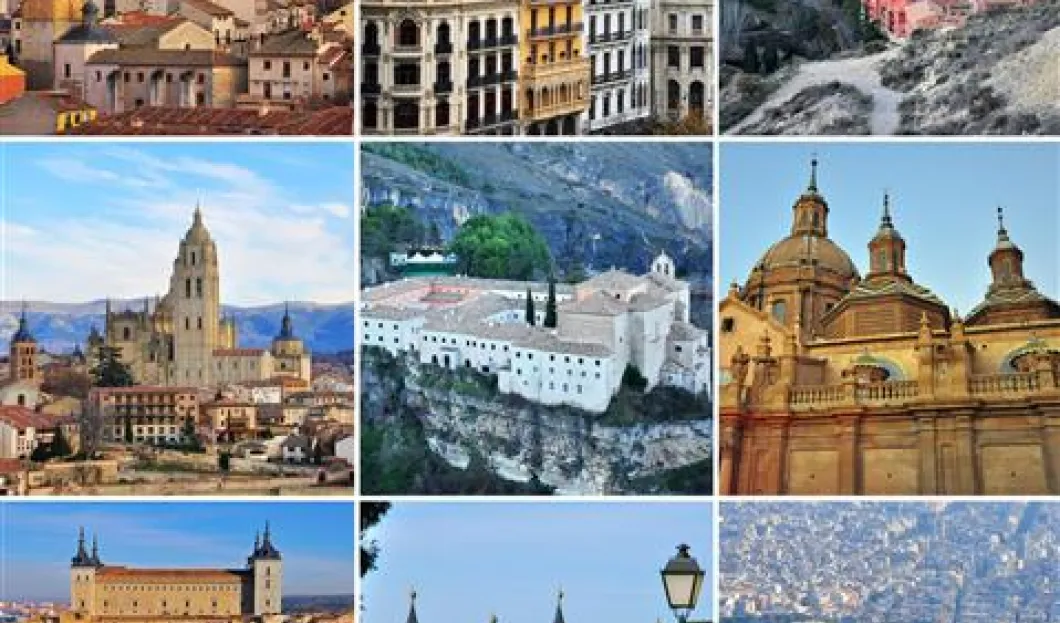
The recovery of foreign tourist demand propelled the profitability of coastal tourist destinations in 2013, especially in the Balearic and Canary Islands, opposite the drop recorded in a large majority of cities, according to the Barometer of Spanish Tourist Destinations.
In 2013, urban destinations in Spain recorded a 1% drop in hotel trade profits, to 47.50 euros per room on average. This lower amount of tourist activity in cities caused a 2.6% fall in touristic spending.
The study, which analyzed 105 tourist destinations, signifies that, from the start of the 2008 crisis, Spanish cities have seen a reduction of 14.8% in social-economic profitability. This is fundamentally attributable to lower levels of profit per room (-8 euros).
On the other hand, vacation destinations on the Mediterranean Coast and in the Balearic and Canary Islands recorded an increase of 17.9% in this time period, benefiting also from the flow of tourists diverted by the Western Mediterranean conflicts.
In terms of employment, the past five years have created 12,699 new jobs in vacation destinations, while urban destinations have seen 13,697 jobs ruined.
However, regarding tourist destinations, as of the close of 2013 Barcelona continues to be the most profitable, thanks to a 3% increase in revenue per available room (RevPar), with an average of 79.8 euros. There was also a 0.6% increase in tourism sector employment.
A New Decrease in Madrid
Among large cities, Madrid was confronted with a new 8.8% drop in RevPar, to an average of 48.2 euros, as well as a drop of 5.9% in tourist sector employment.
According to Exceltur, in Madrid's case, the drop in accumulated profits in recent years demanding that a new touristic strategy be put into place urgently, as well as a new public/private development model. This which would guarantee better promotion and positioning in markets of interest.
It is a similar situation to that of Bilbao, with a 6.6% drop in RevPar and 4.4% in tourism sector employment, and also in Turia, the capital of Valencia, which also faced a reduction of 2.7% in RevPar and a 1.7% drop in tourism sector employment.
The Better the Renovation, the Better the Evolution
Among those available, hotels that presented a different offer, or one from a better category, positioned themselves better in international markets and recorded better behaviors. As such, profits from higher level establishments (5 stars), located in vacation destinations, grew by 12.9%. Conversely, in the case of those in urban areas, this movement was somewhat less, with an average of 2.1%. Barcelona (+11%), San Bartolome de Tirajana (+24.4%), and Adeje (+17%), were the most dynamic.
In average cities, we must point out the recuperation of profit levels in Pontevedra (+10% in RevPar and -5.1% in tourism sector employment); Zamora (+7.4% in RevPar and +1.5% in tourism sector employment); Pamplona (+5.1% in RevPar and -3.8% in tourism sector employment), Logrono (+5.1% in RevPar and +1.2% in tourism sector employment); and Merida (+5% in RevPar and -3.7% in tourism sector employment).
Balearic Islands Among the Most Profitable
Of the 20 “sun and beach” vacation destinations analyzed, those that grew the most in terms of tourism profitability and employment in the sector were in the Balearic Islands: Ciudadela (+15.2% in RevPar and +3.2% the tourism employment sector); Calvia (+11.2% in RevPar and +0.4% in the tourism employment sector); Santa Susana (+10.7% in RevPar and -0.3% in the tourism employment sector); Alcudia (+9.6% in RevPar and +4.5% in the tourism employment sector) and San Jose (+11% in RevPar and -3.1% in the tourism employment sector).
In the Canary Islands, those that stand out are Teguise (+19.6% in RevPar and +9.2% in the tourism employment sector); Yaiza (+16.1% in RevPar and +6.5% in the tourism employment sector); La Oliva (+13.9% in RevPar and +1.2% in the tourism employment sector); San Bartolome de Tirajana (+11% in RevPar and +0.5% in the tourism employment sector); Arona (+9.7% in RevPar and +5.5% in the tourism employment sector); and Adeje (+9.4% in RevPar and +5.3% in the tourism employment sector).
On the Costa del Sol, we have to point out the growth recorded in Torremolinos (+20.2% in RevPar and -0.6% in the tourism employment sector); Marbella (+7.4% in RevPar and +1.8% in the tourism employment sector); and Benalmadena (+6.8% in RevPar and -1.4% in the tourism employment sector); together with Calpe (+22.4% in RevPar and +7.7% in the tourism employment sector), and Gandia (+12.9% in RevPar and 0.5% in the tourism employment sector).









